Gazing north on Yonge Street from Queen Street in 1948, acrylic on stretched canvas, 18” x 24”, painted in 1995.
Toronto is one of the fastest changing cities in the world. I observe this phenomenon with a sense of pride, but at the same time lament that as the city grows vertically and expands its borders, much of its architectural history is being obliterated. Many years ago, in an attempt to preserve the images of my youth, I commenced sketching and painting city scenes, in acrylic, watercolour and oil. The above painting depicts the intersection of Queen and Yonge as I remember it as a boy, when my brother and I accompanied my mother on the old Peter Witt streetcars to visit Eaton’s during the Christmas season. By the time we departed from the store, darkness had fallen. Of course the highlight of the excursion was Eaton’s Toyland, on the fifth floor of the old Eaton’s store. To create the painting, I supplemented my memories with historic photographs from the City of Toronto Archives and sketches of the facades of the two buildings that remain at the intersection today.
I commenced my Toronto paintings in the 1970s, and a few years later, I began retaining the city’s history by researching and writing. My books, fiction and non-fiction, are steeped in Toronto’s past. As I work, I am continually reminded that no matter how much I learn, there is so much more to discover. It is an humbling experience. I often wonder how researchers in London, Paris or Rome cope with the seemingly endless layers of history of these cities, which extend through thousands of years. My research has also caused me to greatly appreciate the writings of Bruce Bell and Mike Filey, who have expertly chronicled Toronto’s past. These historians have truly contributed much to the citizens of this city.
Below are a few more paintings that attempt to recreate scenes from past. Buildings and streetcars dominate most of them, the human figures inserted to animate the scenes or simply to provide foregrounds. Thus, they are not depicted in great detail. In all of the painting, I have employed bright vivid colours, often brushing them on the canvases without blending or mixing. The effect may be jarring to some viewers, but it is how I remember these scenes from my boyhood. When we are young, our world is bright and colourful; it is aging that dim’s our visions.
Painted in 1997, the painting entitled, “Christmas Eve—1948,” is my favourite among those in this series. It most accurately reflects my boyhood memories of blustery evenings when we departed the old Eaton’s Store at Queen and Yonge Streets. It was often after 5pm, when the sun had plunged beneath the horizon and the lights of the city sparkled in the December darkness. It was on occasions such as this that my fascination with streetcars commenced and it has never departed.
The view in the painting gazes west from Queen Street East toward Yonge Street. The Christmas wreaths in the windows of the Bank of Montreal, on the northeast corner, and the decorated trees in the windows of the Simpson’s Store (now The Bay), on the southwest corner, create yuletide warmth on a snowy winter night, the wind whipping the thick flakes of white around the brightly-lit buildings. As a child, I thought it was magical.
The intersection of Yonge and College (Carlton) Streets in 1948. The large building on the right-hand side is the old Eaton’s College Street Store. The painting is 18”24,” acrylic on stretched canvas, painted in 1995. Compared to the previous painting, the scene is calm, the wind more gentle, the dominance of blue hinting at the bitterly cold temperatures, despite the bright red of the streetcars and the sign on the Kresge Store. When writing this post, I noticed that “Kresge” is misspelled in the painting.
View gazing north on Bay Street in 1934, acrylic on stretched canvas, 18” x 24”, painted in 1990. This painting is not from the memories of my youth. I was fortunate to locate a copy of the book that the City of Toronto published in 1934 to commemorate the centennial of the incorporation of the city. In the book was a small black and white sketch of Bay Street. It was the inspiration for the painting, supplemented with archival photos and sketches done on location of the old buildings that remained on Bay Street in 1990.
This is painting was created through archival photographs. The scene gazes east on Queen Street toward Yonge Street, c. 1918. The Eaton’s and Simpson’s (now the Bay) stores are visible. The Bank of Montreal, on the northeast corner of Yonge and Queen can also be seen. This building now contains an entrance to the Yonge Subway. The painting is 18”x20”, acrylic on stretched canvas, painted in 1990.
This colourful winter scene, painted in 1992, depicts shoppers boarding a Yonge streetcar to return home on “Christmas Eve in 1948.” The warmth of the family kitchen and loved ones awaiting them is foremost in their thoughts. The shoppers ignore the biting December winds, thinking of the happiness the contents of the bulky parcels that they carry will create when Christmas morning dawns. As the scene unfold, stores are being shuttered, the frantic yuletide shopping having ended, winter’s darkness quietly descending around them. The Yonge streetcar in the painting will circle Union Station at its south terminus and on its northern route travel as far as the city limits, on the brow of the hill overlooking Hogg’s Hollow. The TTC streetcar contained a small stove, fuelled by coal, to warm the passengers. Christmas morning would descend in a few hours, a time span that excited children considered a lifetime.
This scene is pure fantasy, the streetcar much larger than reality, occupying a greater portion of Yonge Street than is possible. The bright solid colours generate warmth on a cold winter canvas. As a child, I thought streetcars were larger than ocean liners, magical vehicles that transported me to wondrous locations like Kew Gardens, Woodbine Beach, the Humber River Valley, High Park and the ferry docks to journey to Centre Island.
The exaggerations of memory are a vital part of our past. Reality is something that awaits us when are older or have become teenagers, which when we were young children, meant the same. Anyone in their teens was an older person.
To view the Home Page for this blog: https://tayloronhistory.com/
To view previous blogs about movie houses of Toronto—historic and modern
Recent publication entitled “Toronto’s Theatres and the Golden Age of the Silver Screen,” by the author of this blog. The publication explores 50 of Toronto’s old theatres and contains over 80 archival photographs of the facades, marquees and interiors of the theatres. It relates anecdotes and stories of the author and others who experienced these grand old movie houses.
Note: This is a book of memories.
To place an order for this book:
Book also available in Chapter/Indigo, the Bell Lightbox Book Store and by phoning University of Toronto Press, Distribution: 416-667-7791
Theatres Included in the Book:
Chapter One – The Early Years—Nickelodeons and the First Theatres in Toronto
Theatorium (Red Mill) Theatre—Toronto’s First Movie Experience and First Permanent Movie Theatre, Auditorium (Avenue, PIckford), Colonial Theatre (the Bay), the Photodome, Revue Theatre, Picture Palace (Royal George), Big Nickel (National, Rio), Madison Theatre (Midtown, Capri, Eden, Bloor Cinema, Bloor Street Hot Docs), Theatre Without a Name (Pastime, Prince Edward, Fox)
Chapter Two – The Great Movie Palaces – The End of the Nickelodeons
Loew’s Yonge Street (Elgin/Winter Garden), Shea’s Hippodrome, The Allen (Tivoli), Pantages (Imperial, Imperial Six, Ed Mirvish), Loew’s Uptown
Chapter Three – Smaller Theatres in the pre-1920s and 1920s
Oakwood, Broadway, Carlton on Parliament Street, Victory on Yonge Street (Embassy, Astor, Showcase, Federal, New Yorker, Panasonic), Allan’s Danforth (Century, Titania, Music Hall), Parkdale, Alhambra (Baronet, Eve), St. Clair, Standard (Strand, Victory, Golden Harvest), Palace, Bedford (Park), Hudson (Mount Pleasant), Belsize (Crest, Regent), Runnymede
Chapter Four – Theatres During the 1930s, the Great Depression
Grant ,Hollywood, Oriole (Cinema, International Cinema), Eglinton, Casino, Radio City, Paramount, Scarboro, Paradise (Eve’s Paradise), State (Bloordale), Colony, Bellevue (Lux, Elektra, Lido), Kingsway, Pylon (Royal, Golden Princess), Metro
Chapter Five – Theatres in the 1940s – The Second World War and the Post-War Years
University, Odeon Fairlawn, Vaughan, Odeon Danforth, Glendale, Odeon Hyland, Nortown, Willow, Downtown, Odeon Carlton, Donlands, Biltmore, Odeon Humber, Town Cinema
Chapter Six – The 1950s Theatres
Savoy (Coronet), Westwood
Chapter Seven – Cineplex and Multi-screen Complexes
Cineplex Eaton Centre, Cineplex Odeon Varsity, Scotiabank Cineplex, Dundas Square Cineplex, The Bell Lightbox (TIFF)
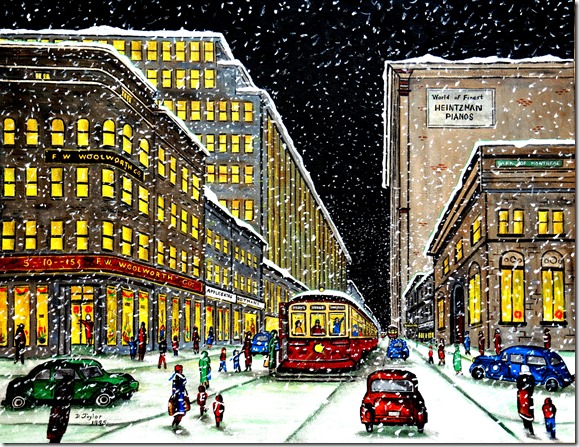
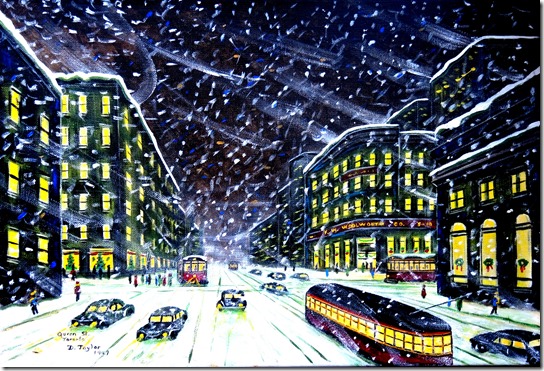
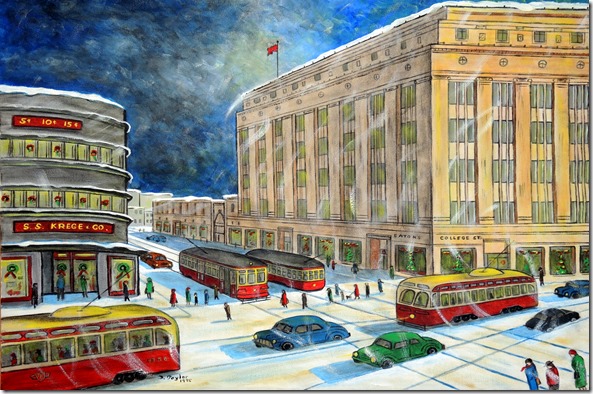
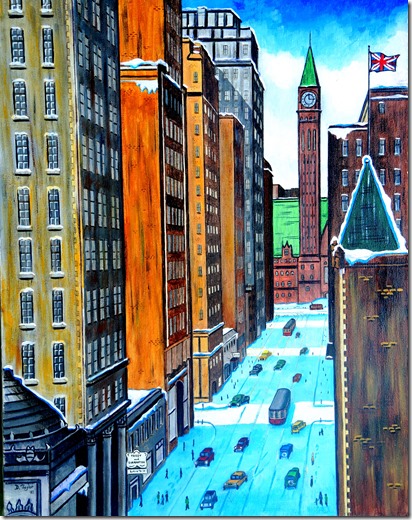
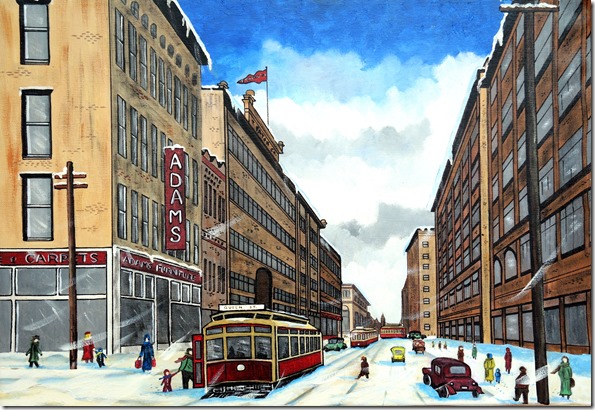
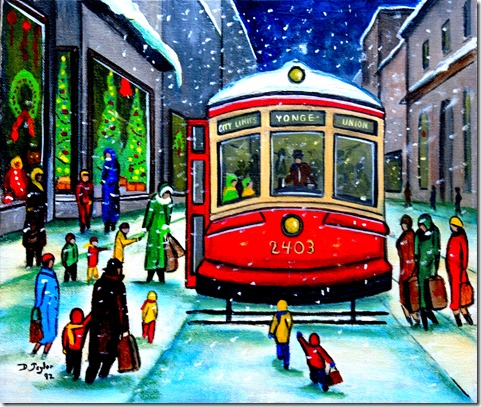
![cid_E474E4F9-11FC-42C9-AAAD-1B66D852[2] cid_E474E4F9-11FC-42C9-AAAD-1B66D852[2]](https://tayloronhistory.com/wp-content/uploads/2015/02/cid_e474e4f9-11fc-42c9-aaad-1b66d8522_thumb2.jpg)


Hi Doug
These pictures are indeed beautiful! The one of Yonge and Queen takes me down memory lane. I also remember going to Eaton Toyland and what an experience!! There is nothing like that today. Loved it! Keep them coming.
Theresa